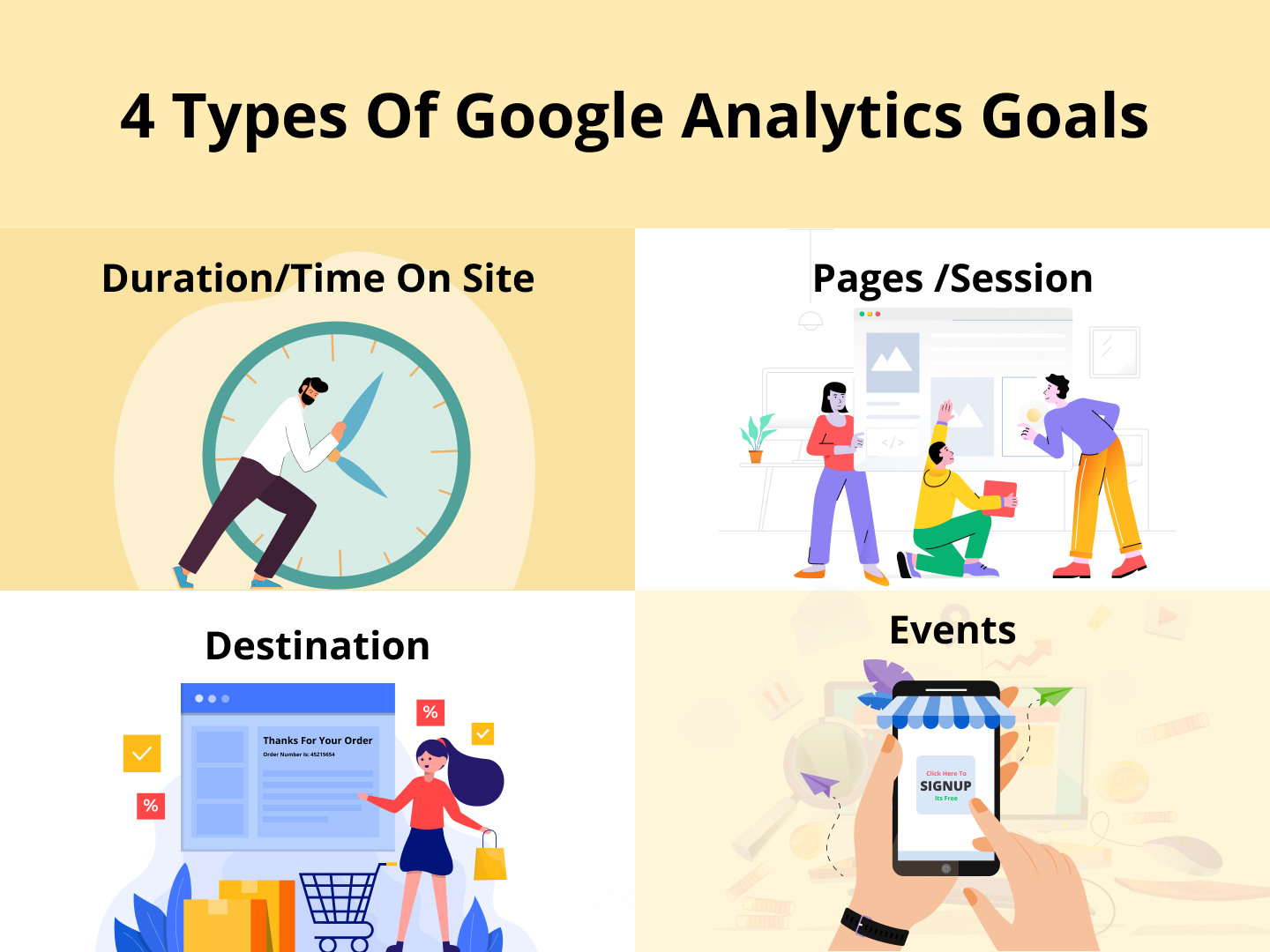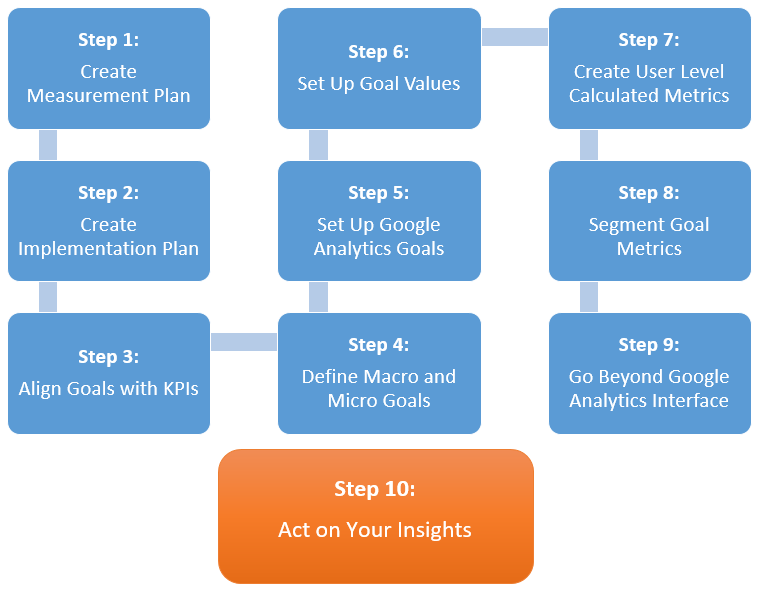Discover the Limitations of Google Analytics Goals: Unveiling the Data Kind That Remain Untrackable
As companies increasingly depend on data-driven decision-making, understanding the constraints of devices like Google Analytics comes to be vital. While Google Analytics Goals deal beneficial insights into customer communications, there exist data types that avoid tracking, presenting obstacles to a comprehensive understanding of customer behavior.
Incomplete User Trip Tracking
Incomplete customer journey monitoring within Google Analytics can hinder the ability to properly evaluate user behavior. When the customer trip is not totally tracked, there are voids in the data that avoid a comprehensive understanding of exactly how customers communicate with a web site. This lack of insight can lead to missed possibilities for optimization and improvements to the user experience.
One usual issue with incomplete individual journey tracking is the inability to see the complete path that individuals take before finishing a goal or leaving the website. Without this info, it is testing to identify where customers may be running into obstacles or rubbing points that avoid them from converting. Furthermore, insufficient monitoring can cover the effect of specific advertising and marketing initiatives or web site adjustments on individual behavior.
To resolve this constraint, it is critical to establish proper monitoring systems within Google Analytics to catch the whole individual journey. This might include setting up occasion tracking, goal funnels, or making use of tools like Google Tag Supervisor to ensure that no essential interactions go unrecorded. By acquiring a comprehensive view of the user trip, internet site owners can make more informed decisions to enhance individual interaction and drive conversions.
Acknowledgment Difficulties
Browsing with attribution obstacles in Google Analytics calls for a detailed understanding of how various touchpoints add to the total conversion procedure. Acknowledgment challenges emerge from the complexity of modern-day customer journeys, where individuals interact with numerous networks before transforming. Google Analytics supplies different acknowledgment versions like initial touch, last touch, and straight, each providing a different point of view on exactly how debt is appointed to touchpoints along the conversion path. Nevertheless, these versions may not always accurately show the true impact of each touchpoint on the conversion.
One usual acknowledgment difficulty is the problem in associating conversions to the appropriate source, especially in situations where users communicate with multiple channels prior to converting. In addition, cross-device monitoring presents one more acknowledgment obstacle, as users commonly switch over between devices during their trip, making it testing to track their interactions effortlessly.
Offline Conversions
Given the challenges associated with attributing conversions accurately in online channels, the dimension of offline conversions offers a significant opportunity for online marketers seeking a more detailed understanding of their customers' trip. Offline conversions describe actions that customers take in the real world, such as making purchases in brick-and-mortar stores or over the phone, participating in events, or engaging with published products - what data is google analytics goals unable to track. These conversions are important for services that run both online and offline, as they give useful insights into the performance of advertising projects across various touchpoints
Tracking offline conversions generally posed a significant obstacle for marketers, as it was testing to attach these actions back to particular on-line communications accurately. Nonetheless, with developments in technology, such as the integration of CRM systems, special identifiers, and promo code codes, companies can currently link the void between online and offline data to get a more alternative view of client actions. By properly gauging offline conversions, marketing experts can enhance their strategies, designate sources much more successfully, and eventually improve the overall consumer experience.
Cross-Device Tracking
Cross-device tracking plays a vital duty in understanding the interconnected nature of customers' electronic communications throughout numerous devices. In today's omnichannel world, where individuals flawlessly switch between smartphones, tablet computers, and desktops, tracking their pop over to these guys actions across these tools is crucial for online marketers to get a detailed view of their consumer journey.

Furthermore, privacy issues and policies such as GDPR and CCPA have additionally difficult cross-device tracking. With individuals requiring even more control over their information and raised limitations on monitoring innovations, marketing professionals should locate cutting-edge and privacy-compliant ways to connect individual communications throughout gadgets.
Dynamic Content Interaction
Understanding individual interaction with vibrant material is pivotal in maximizing electronic advertising and marketing approaches for boosted audience interaction. Dynamic material refers to internet site components that change based upon user habits, choices, or other variables, offering a tailored experience. Nevertheless, tracking user interactions with dynamic web content poses difficulties for standard analytics devices like Google Analytics.
While Google Analytics can track standard interactions like clicks and page views, it might have a hard time to capture even more nuanced interactions within dynamic content. what data is google analytics goals unable to track. Metrics such as time invested on certain vibrant elements, hover actions, or communications within pop-ups are frequently not conveniently quantifiable using basic tracking approaches. This restriction hinders marketers' capability to totally comprehend just how users are involving with vibrant web content and customize their strategies as necessary

Conclusion
In final thought, Google Analytics goals have constraints in tracking insufficient user journeys, connecting conversions properly, capturing offline conversions, tracking cross-device communications, and gauging dynamic material involvement. These restrictions highlight the value of exploring additional tracking methods and devices to obtain an extra extensive understanding of user actions and conversions beyond what Google Analytics can give.
While Google Analytics Goals deal important understandings right into customer interactions, there exist data types that thwart monitoring, positioning obstacles to a detailed understanding of customer behavior.Incomplete individual journey tracking within Google Analytics can prevent the capability to precisely analyze individual habits. When the customer trip is not totally tracked, there are gaps in the data that prevent a thorough understanding of how users connect with a web site.One typical issue with insufficient customer journey tracking is the inability to see the complete Home Page path that users take before completing an objective or leaving the site. By obtaining a comprehensive sight of the user journey, internet site proprietors can make more informed decisions to improve customer engagement and drive conversions.